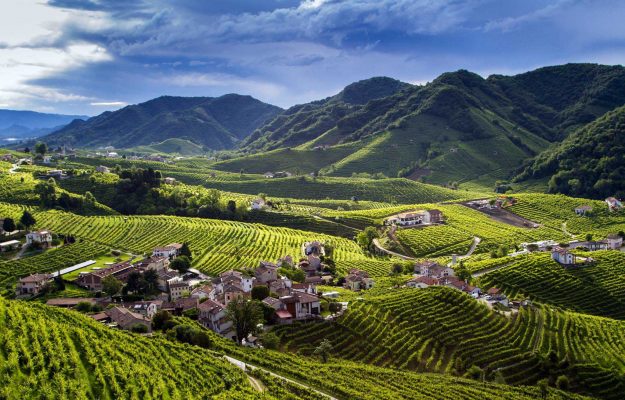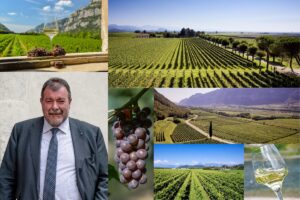After the Unesco recognition for “Le Colline del Prosecco di Conegliano e Valdobbiadene”, the places where the most famous Italian sparkling wine in the world was born are looking to the future, with all 29 municipalities in the area involved in the UNESCO site called to sign a new urban planning specification together with the Regione Veneto, with President Luca Zaia, who stressed that this is “the start of a major operation of cultural investment and identity in the territory”. It has been discussed, in Pieve di Soligo, between institutions and producers.
“Our community has proven to find ingenious solutions, from the establishment of Italy’s first School of Oenology in 1876, to Antonio Carpené’s intuition in being able to grasp the potential of Prosecco wine to become a sparkling wine, to the creation of the Consortium of Protection in 1962 for the promotion and defence of Prosecco with the obtaining of the Controlled Designation of Origin , exactly 50 years ago - stressed Innocente Nardi, president of the temporary association for the purpose that guided the path of recognition of UNESCO and the Consortium of Prosecco Docg - and in this path of success is part of the UNESCO candidacy, starting from below, strongly desired by the territory, in particular by producers, operators in the sector, the academic world. The aim was to enhance our cultural heritage and landscape by highlighting the distinctive elements that those who live here seem to take for granted, but outside the territory, we recognize its uniqueness. The proof of this is the Italian and foreign tourists who are fascinated and amazed by so much unexpected beauty”.
Now, Zaia reminded us, it is fundamental to address the issues of urban planning and the harmonious development of the territory: “I think that the UNESCO registration can be a great opportunity to upgrade the entire rural territory. “My idea has always been not to authorize new buildings for tourist hospitality, but to enhance what already exists. The real urban challenge will be to classify the small rural buildings present and allow their owners to upgrade them as a tourist destination. Tourism will be one of the future challenges, both in terms of sustainability and flow management”.
On the other hand, as underlined by the Superintendent for Archaeology, Fine Arts and Landscape for the Metropolitan Area of Venice and the Provinces of Belluno, Padua and Treviso, Vincenzo Tinè, the objective of “the importance of enhancing the artistic and cultural heritage both in the candidacy and now in the tourist promotion of the site, even in a territory mainly characterized by viticulture” emerges strongly.
“The Unesco recognition - added Nardi - is a source of pride not only for the territory but also for Italy. A recognition for the landscape as a cultural expression of a community. This is another opportunity for the citizens of the territory to demonstrate their ability to work as a team and work towards a single goal: the hills of Conegliano Valdobbiadene must become the cultural salon of a phenomenon called Conegliano Valdobbiadene Prosecco Superiore”.
Copyright © 2000/2025
Contatti: info@winenews.it
Seguici anche su Twitter: @WineNewsIt
Seguici anche su Facebook: @winenewsit
Questo articolo è tratto dall'archivio di WineNews - Tutti i diritti riservati - Copyright © 2000/2025









































































































































































































